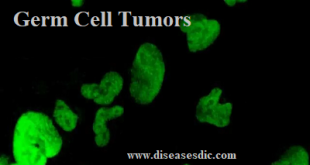What is Angioedema?
Angioedema is a skin reaction similar to urticaria. It is most often characterised by an abrupt and short-lived swelling of the skin and mucous membranes. All parts of the body may be affected but swelling most often occurs around the eyes and lips. In severe cases, the internal lining of the upper respiratory tract and intestines may also be affected.
Types of Angioedema
There are four main kinds of angioedema: Allergic, idiopathic, drug-induced, and hereditary.
Allergic Angioedema
This is the most common type, and it usually affects those with an allergy to a type of food, a medication, venom, pollen, or animal dander.
In serious cases, there may be a severe allergic reaction known as anaphylaxis. The throat may swell, making it hard for the patient to breath. Blood pressure may fall suddenly. This is a medical emergency.
This type of angioedema is not chronic, or long-term. As soon as the individual identifies which item is causing the allergic reaction, they can avoid it.
Drug-induced Angioedema
Certain medications can cause angioedema. These include angiotensin-converting enzyme (ACE) inhibitors, a treatment for hypertension, or high blood pressure.
According to the Merck Manuals, 30 percent of cases of angioedema that are seen in the emergency department are linked to the use of ACE inhibitors.
If it stems from using an ACE inhibitor, a healthcare provider can prescribe a different type of blood pressure medicine.
Another common type of medication that can cause angioedema is the non-steroidal anti-inflammatory class of drugs (NSAIDS) such as ibuprofen or aspirin. These are common painkillers.
Idiopathic Angioedema
If a disease is idiopathic, the cause is unclear. In this case, the doctor may not be able to identify a specific cause for angioedema after looking at all of the usual causes.
Hereditary Angioedema
Some types of are inherited. This means that several people in the family may have symptoms.
In the case of hereditary angioedema, there is a problem with the C1 inhibitor protein. The patient will have low blood levels of the protein C1-esterase inhibitor (C1-1NH protein).
In this type of angioedema, episodes of angioedema will come and go over time.
Pathophysiology of Angioedema
Angioedema is a result of the fast onset of an increase in local vascular permeability in subcutaneous or submucosal tissue. Histamine and bradykinin are the most recognized vasoactive mediators known to be critical in the pathologic process of angioedema; most cases of it are primarily mediated by 1 of these 2 mediators, though some investigators indicate the possibility that both may be involved in certain cases.
Other vasoactive mediators are, at least in part, involved in the pathogenesis of various types of angioedema. Leukotrienes, for example, may play an important role in the onset of angioedema that is induced by nonsteroidal anti-inflammatory drugs (NSAIDs). Thus, factors influencing histamine release, bradykinin metabolism, and endothelial cell function or permeability may directly or indirectly regulate the process of angioedema.
Causes
Angioedema may be caused by an allergic reaction. During the reaction, histamine and other chemicals are released into the bloodstream. The body releases histamine when the immune system detects a foreign substance called an allergen.
In most cases, the cause of angioedema is never found.
The following may cause angioedema:
- Animal dander (scales of shed skin)
- Exposure to water, sunlight, cold or heat
- Foods (such as berries, shellfish, fish, nuts, eggs, and milk)
- Insect bites
- Medicines (drug allergy) such as antibiotics (penicillin and sulfa drugs), nonsteroidal anti-inflammatory drugs (NSAIDs), and blood pressure medicines (ACE inhibitors)
- Pollen
Hives and angioedema may also occur after infections or with other illnesses (including autoimmune disorders such as lupus, and leukemia and lymphoma).
A form of angioedema runs in families and has different triggers, complications, and treatments. This is called hereditary angioedema.
Risk factors of Anioedema?
Certain factors can increase your risk of developing angioedema. These include:
- Aprevious occurrence of angioedema or hives
- A previous allergic reaction
- A family history of angioedema or hives
- Sudden temperature changes
- Stress or anxiety
- Certain medical conditions
Symptoms of angioedema
The main sign is swelling that develops below the skin’s surface.
Swollen skin
The swelling is caused by a collection of fluid in the deep layers of the skin.
It most often affects the hands, feet, eyes, lips, or genitals. In severe cases, the inside lining of the throat and bowel can be affected (see below).
The swelling usually appears suddenly, and is more severe than normal hives (nettle rash). It commonly lasts 1 to 3 days. There may be a prickling sensation in the affected area before swelling is visible.
The swelling is not itchy and the skin may look a normal colour; however, many people with allergic or idiopathic angioedema also develop urticaria (hives), which is red and itchy.
Other symptoms
As well as visible swellings, angioedema can cause other symptoms, including:
- A hot or painful sensation in the swollen areas
- Swelling of the inside of the throat, the windpipe and the tongue, making breathing difficult
- Swelling of the conjunctiva (the transparent layer of cells that cover the white part of the eye), which affects vision
People with hereditary angioedema may also experience:
- Abdominal (stomach) pain caused by swelling in the stomach and bowel, which can cause nausea, vomiting and diarrhoea
- Swelling of the bladder or urethra (the tube that connects the bladder to the genitals), which can cause bladder problems and difficulty passing urine
Complications of Angioedema
In some cases, angioedema can be very extreme and lead to complications like:
- Violent vomiting and dehydration due to angioedema of the gastrointestinal tract.
- Angioedema in the lungs can cause shortness of breath, wheezing etc.
- Angioedema of larynx can cause asphyxiation and can even be fatal.
Such complications of angioedema require immediate medical intervention and treatment.
Angioedema diagnosis
If you have experienced angioedema for the first time, your doctor will try to work out what may have caused it. There are several different causes of angioedema. It’s important to know what’s causing your symptoms, as this affects the treatment you’ll need. There’s no single test to determine the cause of it. Some of the checks and tests you may have are outlined below.
A detailed medical history is invaluable in diagnosing angioedema.
- Keep a diary of exposure to possible irritants
- Tell your doctor about all medications you take, including over-the-counter (OTC) drugs and herbal remedies (even if taking them irregularly)
- Any family history of skin rash, allergies
Skin prick testing may be performed to try and identify any allergens. If hereditary angioedema is suspected, blood tests to check for levels and function of specific complement blood proteins may be done.
Allergy tests
If your doctor thinks your symptoms may have been caused by an allergy, they may refer you to a specialist allergy or immunology clinic for further testing.
Tests you may have include:
- A skin prick test – your skin is pricked with a tiny amount of the suspected allergen to see whether there’s a reaction
- A blood test – a sample of your blood is tested to determine whether your immune system reacts to a suspected allergen
Blood test
If your doctor thinks your symptoms may be caused by a genetic fault (hereditary angioedema) you’ve inherited from your parents, they may refer you for a blood test.
The test checks the level of a substance called C1 esterase inhibitor in your blood. This substance is important in regulating the immune system.
A very low level of C1 esterase inhibitor would suggest you have hereditary angioedema affecting how much of this substance your body is able to produce.
Treating angioedema
Medication is the main treatment for angioedema, although many cases get better after a few days without treatment.
Allergic angioedema and idiopathic angioedema are usually treated in the same way, using a combination of antihistamines and corticosteroids to help relieve the swelling.
Drug-induced angioedema can usually be treated by using an alternative medication to the one causing your symptoms.
If you also had symptoms of anaphylaxis during an episode of it, you will probably be given an adrenaline auto-injector pen in case your symptoms return.
Hereditary angioedema cannot be cured and does not respond to adrenaline, antihistamines or steroids, so a preventative approach is taken. A number of different medications are used to stabilise the protein levels in your blood to help prevent symptoms developing.
Antihistamines
- Antihistamines work by blocking the effects of a protein called histamine, which is one of the chemicals responsible for causing your skin to swell.
- A 2-week course of a non-sedating type of antihistamine (which does not cause drowsiness) is usually recommended – these include fexofenadine and cetirizine. Cetirizine can be bought over the counter in pharmacies and supermarkets without a prescription.
- Antihistamines can also be given by injection at hospital or your GP surgery.
- If you also have urticaria (hives) and are being kept awake at night by itchy skin, your GP may prescribe an older type of antihistamine to take before going to bed. These types cause drowsiness and should help you sleep.
A minority of people will still experience drowsiness after taking the newer type of antihistamines. If you find yourself feeling drowsy, you should avoid:
- Driving
- Drinking alcohol
- Operating complex or heavy machinery
Other side effects of the newer antihistamines include:
- Headache
- Dry mouth
- Dry nose
These side effects are usually short-lived and should pass quickly.
Corticosteroids
Corticosteroids (steroids) work by blocking many of your immune system’s actions. In most cases, a 3 to 5 day course of steroid tablets is recommended. A steroid called prednisolone is the preferred choice.
Side effects of prednisolone include:
- Nausea
- Abdominal (stomach) pain
- Tiredness
- Oral thrush – a fungal infection inside your mouth
- Dizziness
If you feel dizzy after taking prednisolone, avoid driving and operating heavy machinery. These side effects should pass once you finish the course of treatment.
Steroid injections may be needed for more severe cases of this disease. These are usually administered in hospitals or at specialist clinics by an allergy specialist or immunologist (a doctor who specialises in treating conditions that affect the immune system).
Medication for hereditary angioedema
The medication used to treat hereditary angioedema falls into 1 of 2 categories:
- medication used to prevent angioedema
- medication used to relieve symptoms
Danazol
Danazol is a synthetic hormone that is effective in preventing the symptoms because it helps boost levels of the C1-inh protein.
However, danazol can cause a number of unpleasant side effects if used on a long-term basis. For example, it may cause:
- weight gain
- depression
- disruption to the menstrual cycle – such as irregular periods or absent periods
- high blood pressure
- in women, changes to the body that are usually associated with men – such as excessive body hair growth, flattening of the chest, deepening of the voice and an increase in muscle tone
- liver problems
Due to these side effects, many people with hereditary angioedema are uneasy about using danazol on a long-term basis. Stanozolol is a similar medication that is slightly better tolerated.
Tranexamic acid
Tranexamic acid is also an alternative medication to danazol. It can be as effective as danazol, but does not cause as many side effects and is preferred for use in women.
Icatibant
Icatibant is a relatively new medication used to treat acute (short-lasting) episodes of swelling. It works by blocking the effects of some of the chemicals that are responsible for causing the swelling in cases of hereditary angioedema.
Icatibant is given by injection under the skin, and a second injection is often required.
Common side effects of icatibant include:
- adverse skin reactions at the site of the injection – such as pain, redness, swelling or itchiness
- itchiness in other areas of the skin
- dizziness
C1-inhibitors
Purified C1-inhibitor concentrate is widely used to replace the missing protein in the blood. It’s needed for patients undergoing surgery, to prevent attacks caused by surgical trauma. It’s used to treat acute attacks and is injected directly into the vein.
Many patients will keep supplies of their concentrate at home for emergency use.
Icatibant and C1-inhibitor concentrate will be prescribed by the specialist immunology unit caring for the patient with hereditary angioedema
Prevention
- You can avoid allergic episodes if you stay away from foods, medications, or other conditions that trigger it. If you don’t know what’s causing your episodes, try to keep a diary to track foods, symptoms, and situations tied to your symptoms.
- Your doctor might suggest you take antihistamines every day instead of just when you need them. This can help get rid of episodes, make them happen less often, or be less dangerous. You also won’t have to wait for the medicine to start working when you need relief.
 Diseases Treatments Dictionary This is complete solution to read all diseases treatments Which covers Prevention, Causes, Symptoms, Medical Terms, Drugs, Prescription, Natural Remedies with cures and Treatments. Most of the common diseases were listed in names, split with categories.
Diseases Treatments Dictionary This is complete solution to read all diseases treatments Which covers Prevention, Causes, Symptoms, Medical Terms, Drugs, Prescription, Natural Remedies with cures and Treatments. Most of the common diseases were listed in names, split with categories.







